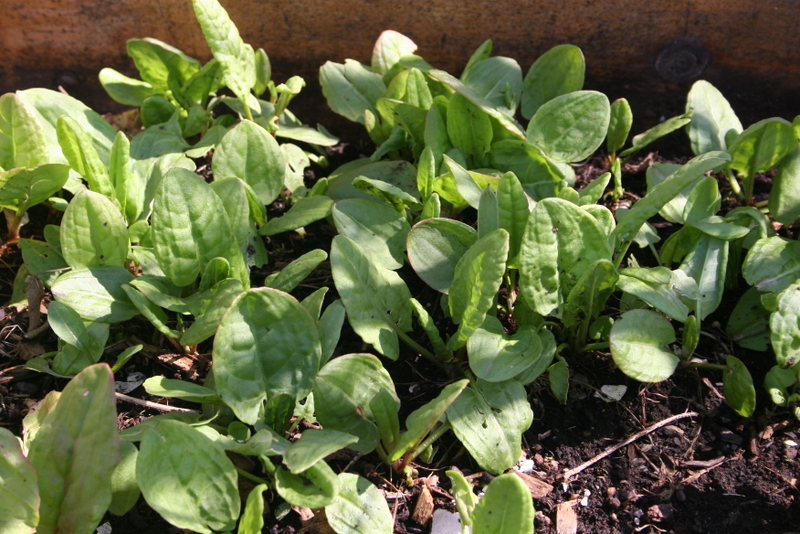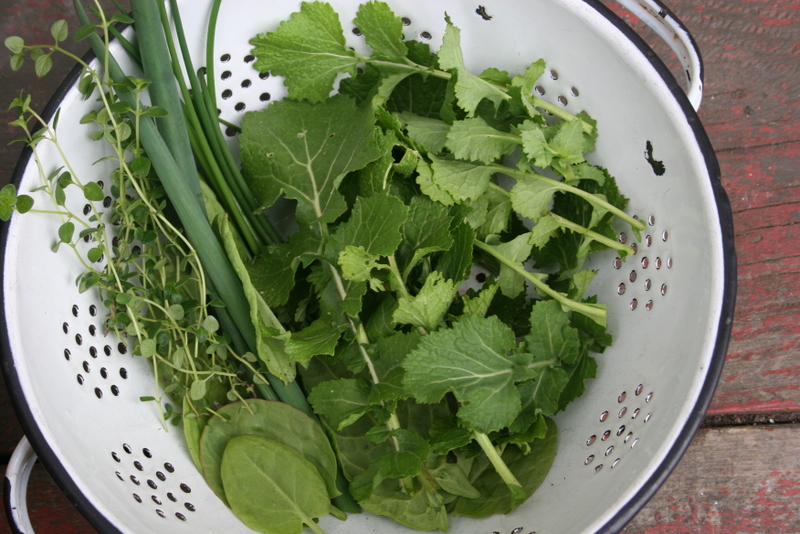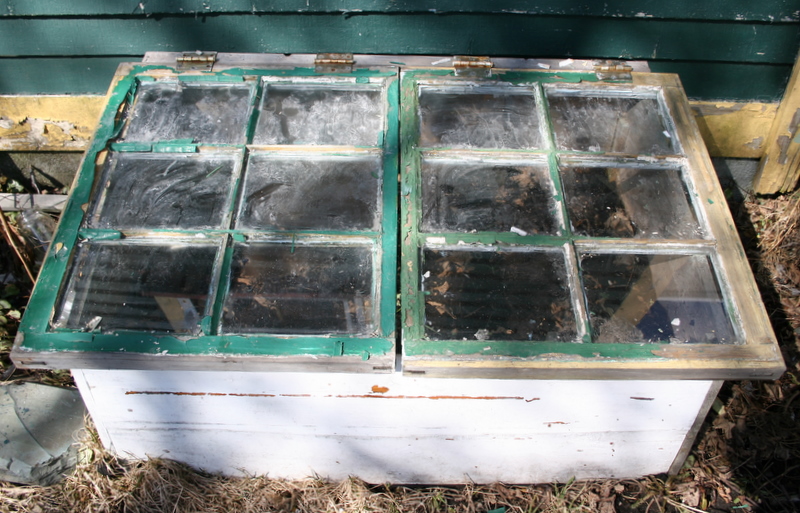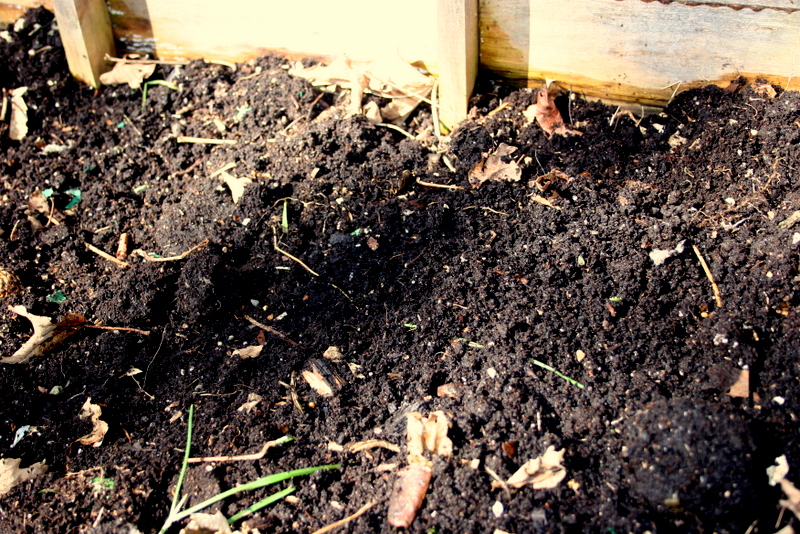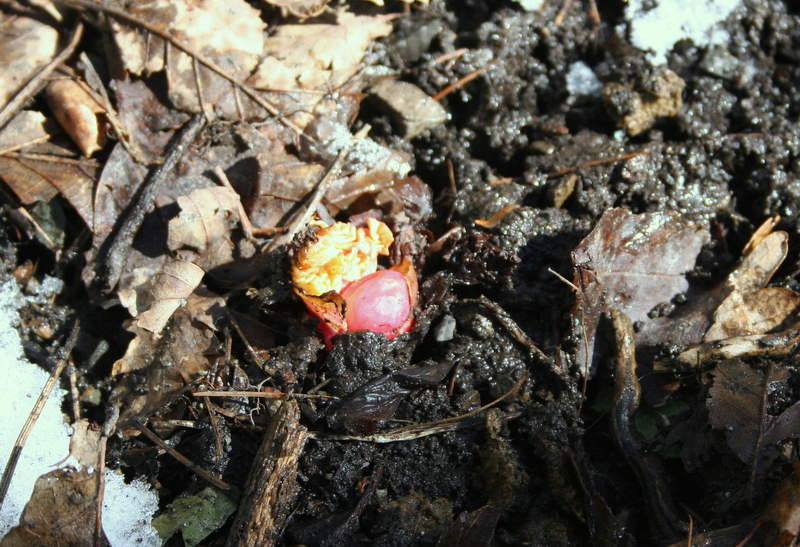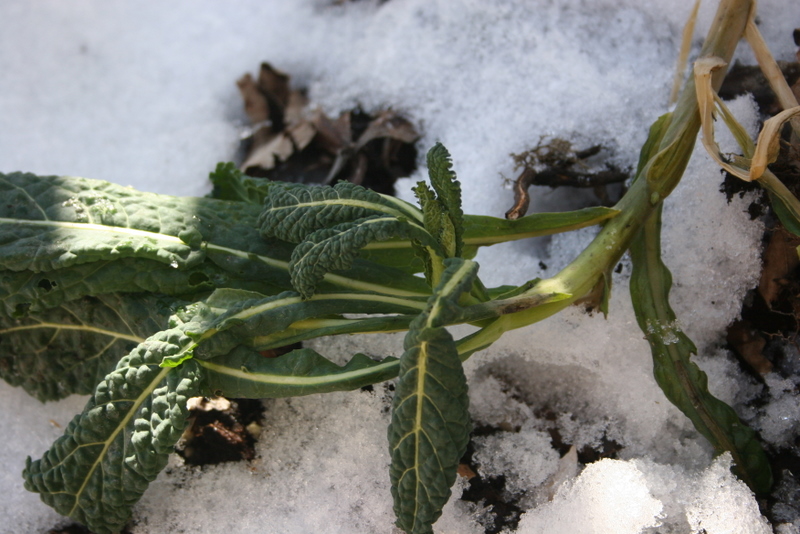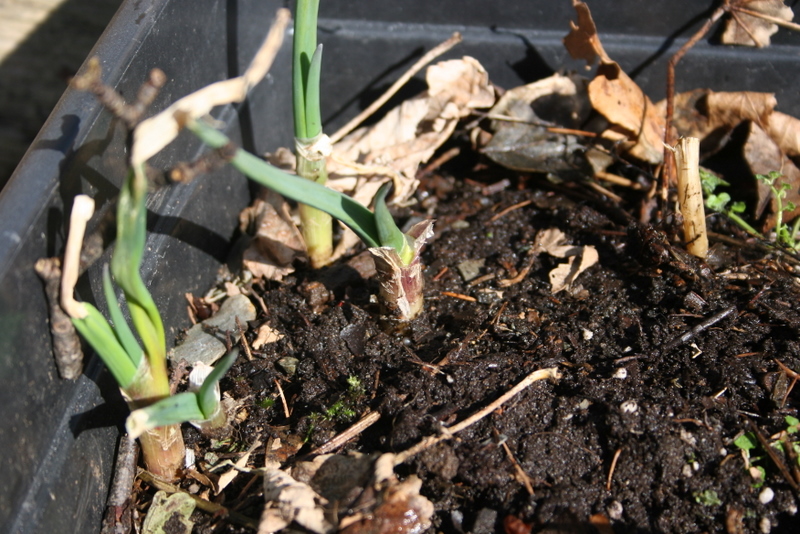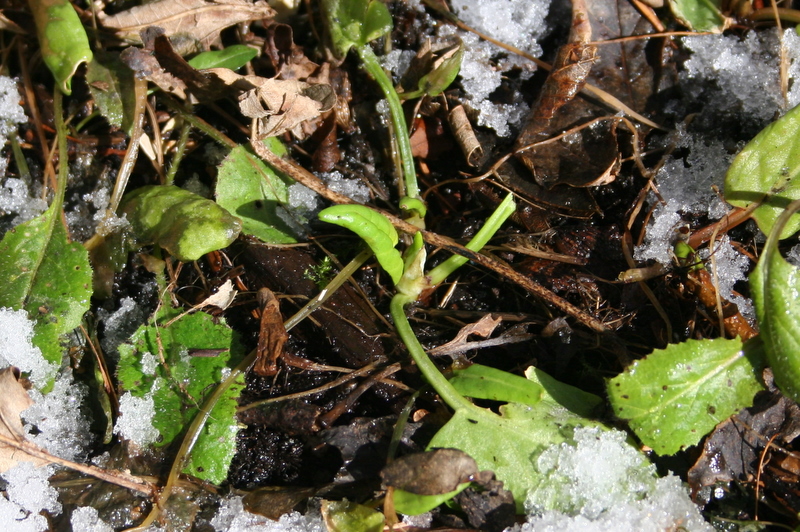If you're lucky enough to have too many herbs from the garden or market, then freezing is a simple method to store them for use year-round. The best herbs to freeze are ones with tender leaves. Herbs with tough leaves are better dried. Here are examples of good herbs to freeze: basil, chives, dill, parsley, mints, chervil, marjoram, fennel, and tarragon.
Someone, please think of the children!
If you ask any food gardener who is also a parent why they grow veggies, chances are they'll answer, "I want my children to know where their food comes from." We all love teaching our kids the joy of planting and picking and eating their own food. It's a science project, an artistic endeavour, an exercise in patience, a lesson in nurturing, and a way to burn off crazy kid energy (plus, having them help you hand-pollinate squashes could just form the basis for that big where-do-babies-come-from talk when the time comes). But behind every parent's wish to empower their children with horticultural knowledge is another simple desire: that our kids just eat their freakin' vegetables!
My eldest child, who is now 8 1/2, has always been what you would call a "good eater." She has her taste preferences - she doesn't like peppers or mushrooms, but overall, she's cool with veggies. Brussels sprouts, sunflower shoots, sorrel leaves, beets, she'll eat the lot of it. If I had never had another child, I would probably be insufferably smug, thinking that it was my superior parenting, my attention to foodie detail, and my excellent role modelling that made her this way.
There's nothing like a second child to teach you a little humility. My 3 1/2 year old is that kid, the one who only likes food in the beige-to-faux-cheddar-orange colour range. He will eat corn on the cob in season, but he's very picky about quality. He'll eat strawberries on occasion, but only if they're "fixed," which means "not cut up." Sometimes he'll nibble the tops off some steamed broccoli, if he's being an elephant and the broccoli is a tree, but he has to get down on the floor to do it. Frozen peas (while still frozen), tinned peaches, applesauce, maybe half a banana at a time... and that's about it.
The littlest guy, who just turned 2, is happy to eat nothing but raw fruit, and I'm happy to let him do it, so long as I can sneak a little protein into him in the form of yogurt or peanut butter. Cooked vegetables are pretty much always rejected, and he's still too young for most crunchy raw veggies to not pose a choking hazard. So... more frozen peas. Yeah.
I can't blame them for being fussy. Most of the imported produce we get here throughout the year tastes like wet cardboard. We grownups have the strength of will to force down any old food if someone can convince us it's good for us. Kids are more elemental than that. They want their food to taste good, and aren't about to waste time on anything that doesn't meet their standards.
So thank goodness for garden-fresh summer produce, which my kids, no matter how picky, will scarf down happily and proudly.
Not all of it, of course. They aren't impressed by my bronze fennel or my garlic scapes. They don't care whether I'm attempting to grow eggplants this year, or about my seven varieties of basil. Lovage and lemon balm? Pffft.
But there are veggies that always go over super well. Here are my kids' favourites in the garden:
- Peas and beans. I'm growing a ridiculous number of beans this year, because I know they'll get eaten, either right away, or over the winter if I blanch and freeze then. The peas don't even make it into the house most of the time, being devoured straight off the vine. Both crops grow quickly, and the seeds are big, which makes planting them gratifying for little, impatient people. Also, my kids like pea shoots, which grow fine indoors or in a shady spot in the garden.
- Tiny tomatoes. I'm trying "Hundreds and Thousands" and "Hahms Gelbe Topftomate" at my house this year. Miniature veggies seem to go over extra well with miniature humans. My youngest can easily polish off a pint of grocery-store cherry tomatoes if I turn my back, so I'm going to put these up on a shelf, and I'm hoping that the extra sweetness and cuteness of homegrown tomatoes will encourage my middle guy to eat them, too.
- Edible flowers. I'm not sure whether edible flowers have much of a nutritional profile, but they're fresh and they grow, so I figure they must be good. Weirdly, it's my middle guy who loves these the most. I let the edible wildflower Dame's Rocket (Hesperis matronalis) grow wherever it springs up in the back yard. I also grow violas and violets, calendula, nasturtium, mallows, and tuberous begonias for munching on. Herb flowers like chives and oregano are tasty in salads, as are flowers from arugula, Chinese broccoli, and anything else in the cabbage family. These flowers are all excellent for attracting pollinators and other beneficial insects, so they're educational as well as delicious.
- Radishes. My eldest likes the roots, my middle guy enjoys the young thinnings, and I like the seed pods. The little guy is indifferent, but he may come around.
- Fancy lettuce. I'm hoping that freckled leaves and curly red ones will encourage the consumption of salad. Fingers crossed. My kids all like raw spinach from the garden, too, so I'm growing some regular spinach and some with red stems.
What my kids like and what anyone else's kids like may be totally different. My guys don't get excited about growing carrots; the tiny seeds, the slow germination, and the summer-long wait make carrots less of a thrill than I would have thought (I still grow a few, though). My kids like planting zucchini, with its big, easy-to-handle seeds, but they're not all that interested in eating it. I'm not holding my breath for them to go crazy over the parsnips and kale. More for me, I figure. Who knows, though? Perhaps this will be the year that my children and I sit down to a big plate of steamed rapini together. Or maybe they'll at least try it.
(If you're looking for a great book about growing veggies with kids, I've found The Family Kitchen Garden really useful. It's a British publication, so the planting and harvesting dates are a little different from ours, but it is very well-written, funny, and realistic.)
Lazy in the fall, happy in the spring
Last weekend, I had the extreme good pleasure to attend a workshop on extending your growing season. The workshop facilitator was Dan Rubin, a home vegetable gardener who, through tactical use of raised beds, glass panes, and plastic row covers, has grown a whole lot of impressive eats in a location which is, essentially, a salt-lashed, wind-beaten, topsoil-less bit of rock (and I say that with love - I was born there and I adore the place). As the workshop participants wandered Dan's garden, and the garden at Points East Bed and Breakfast next door, we identified the plants which, despite having been left outside for the harsh coastal winter, were doing just fine: kale, huge leeks, sorrel, thyme, Egyptian onions... perhaps not looking quite as lush as they had been in October, but still mighty impressive.
Now, my own garden is also bursting with vegetables that survived the winter, however, in my case, most of the veggies are still there because I did such a miserable job of tidying the garden last year. Because really, aside from putting in a new batch of garlic, I didn't do a thing. Even the garlic I managed to mess up - I don't think I got around to planting it until January some time, so if I get decent heads it will be against all odds (and purely down to my excessive application of compost and prayer... and I'm an atheist, so it's really about the compost...).
I've been picking at the sorrel and the chives for a little bit now, and I ate what was left of the droopy kale. The oregano popped up, and my husband and I were compelled to fire up the grill for our inaugural spring "souvlaki plate" dinner.
And then I found something I hadn't anticipated. In the very messy bed in the front yard, there was this weedy-looking thing that had remained green under all the snow (and under the Christmas tree that we had stylishly discarded on top of it). I didn't give the weedy thing much thought, because I couldn't remember what I had planted there. But then it struck me: arugula! Survivor arugula! Survivorugula!
Sure enough, the weedy-looking stuff was the arugula that I had planted last year and which, in the terrible weather we had, didn't make much of an appearance at all. Here it had been, silently waiting out the cold, and then bursting into leaf as soon as the snow melted. It was tender, sweet, and possibly the most delicious arugula I have ever eaten.
I harvested a bunch of it, along with some sorrel, chives, Egyptian onions, and some lemon thyme (a little leggy from spending the winter in the kitchen window, but still tasty). Then I boiled some new potatoes until they were tender, while sauteeing my harvest with some of the last summer garlic. When the potatoes were done and the greens just wilted, I tossed it all together.
A meal fit for royalty, I tell you!
Since then, I have picked at the arugula a little more - I used some for greens in our burgers last night (along with some fresh herb mayo that I whipped together using some more of the chives and lemon thyme, with a generous grinding of black pepper). It won't last long, I'm sure; apparently overwintered arugula bolts at the slightest provocation. That's okay, though, because I have more arugula coming up in the cold frame to take the place of this stuff. I don't think it could possibly be as lovely, though.
This fall, I will definitely make sure I have some arugula overwintering somewhere in the garden. And I'll write down where I put it, too, so I don't end up wasting precious days asking, "What the heck kind of weedy thing is that?"
The garden that lived
I had high hopes for my fall and winter garden. Last summer I surrounded myself with books telling me how to extend the season and eat fresh through the year. I was ready to wrap my whole yard in greenhouse plastic and eat kale quiche all winter long. Alas, dear readers, it was not to be. In September I started feeling super run-down. Around October I started feeling downright woozy. By Thanksgiving I had figured out that I was (and am!) pregnant. Between wrangling three children and gestating a fourth, gardening, even the easy indoor stuff like sprouting, took the back burner.
But it doesn't take much for a gardener to spring back to life. A little sunshine and a bit of inspiration were all I needed. Last Saturday - a glorious, if cold, March day - I attended a discussion on urban farming, organized by the local Slow Foods group. During the talk, someone asked when the speaker planned to start his greens. His reply? They were already growing! He had a greenhouse, and he had lettuce growing away in there, under an upturned aquarium. His wife and co-gardener added that if it's warm enough for weeds to grow, it's warm enough to plant spinach.
Well. That was all it took. Yesterday, when the sun was out, I braved the remaining snow in the back yard and cracked open my neglected cold frame. You know what was in it? Dandelions. Growing. And grass, also growing, and a somewhat floppy but clearly still alive calendula. The top surface of the soil was a little frosty, and the soil around one edge was frozen pretty solid, but after a little bit of stabbing with my trowel, I had nice, loose soil that I could pick most of the weeds out of.
Lest you think my cold frame is some kind of fancy-pants set-up, here's a picture. It's ugly.
Pretty shabby, hey? The body of the cold frame is an old wooden dresser we got from Freecycle, and which, after a couple years of use, was in bad shape. My husband took out all the drawers and supports, and laid the whole thing on its back, then cut it down at an angle so it would make the most of the sunlight. The windows are from Power's Salvage in St. John's, and the hinges are either from Power's, or were in our basement when we bought the house. We have it facing south-west, so it gets sunlight through most of the day. It's great.
This is what the soil inside looks like:
It's not exactly warm, but it's definitely not frozen. There aren't any ice crystals, even. So I did what any sensible gardener would do: I planted some seeds. Nothing fussy, just some spinach, arugula, and radicchio. All three of those are cold-hardy greens, and they germinate at relatively low temperatures. They are also last year's seeds (I think the radicchio is from two years ago), so the germination rate might not be great, but I'll take what I can get. I wouldn't risk putting any delicate plants in the cold frame this early (the peppers, squash, eggplants, and tomatoes will have to wait), but for sturdy greens, it should be just fine.
Today, even more of the snow has melted from my yard, so I decided to have a poke around and see what plants survived the winter. It's pretty amazing. I have lavender, sage, and thyme still green under the snow, and loads of vegetables growing as if winter had never happened!
It felt so good to be able to scratch, sniff, and nibble my way through the yard, in the sunshine. I know better than to trust that spring might already be here - it is, of course, only March, and our average last frost date in St. John's isn't until June 2. Still, a sneak peek at what is waiting for me once the rest of the snow melts is pretty exciting.
Did anything survive the winter in your garden?









